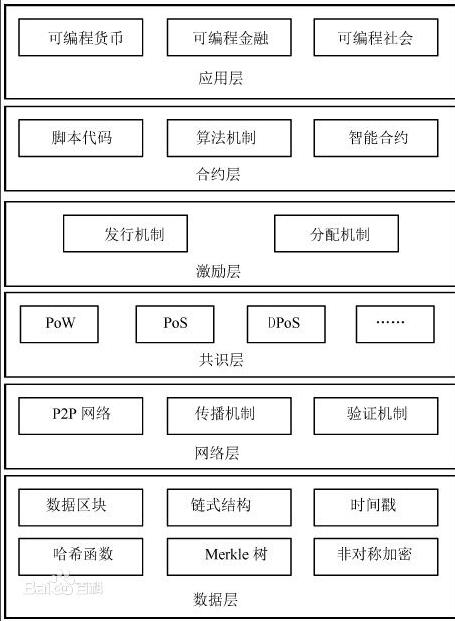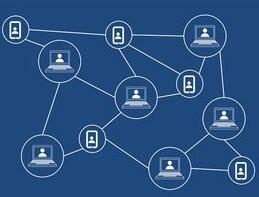The blockchain is widely used and the prospects are clear. If the first 30 years are the Internet age, then the next blockchain era is no exaggeration. This article mainly introduces you to the five characteristics of the blockchain and the three major technical guarantees and application areas. Let's take a look at it.
What is a blockchain?Blockchain is a new application mode of computer technology such as distributed data storage, point-to-point transmission, consensus mechanism, and encryption algorithm. The so-called consensus mechanism is a mathematical algorithm for realizing trust and acquiring rights between different nodes in the blockchain system.
To understand the blockchain, you must first say bitcoin. Bitcoin is not a currency, but an electronic ledger. Each investor's computer stores a backup of the general ledger, and all information is updated in real time. Simultaneously, the blockchain is an underlying technology of Bitcoin. It is a decentralized database that stores all transaction records. This technology is also recognized by the financial sector for its security and convenience.
In fact, the blockchain is a string of data blocks generated by cryptography. Each block contains information about a bitcoin network transaction, which verifies the validity of the message and generates the next block.
Blockchain infrastructure modelIn general, a blockchain system consists of a data layer, a network layer, a consensus layer, an incentive layer, a contract layer, and an application layer. The data layer encapsulates the underlying data block and related data encryption and time stamping basic data and basic algorithms; the network layer includes a distributed networking mechanism, a data propagation mechanism, and a data verification mechanism; the consensus layer mainly encapsulates the network node. Various types of consensus algorithms; the incentive layer integrates economic factors into the blockchain technology system, mainly including the issuance mechanism and distribution mechanism of economic incentives; the contract layer mainly encapsulates various scripts, algorithms and smart contracts, and is a blockchain. The basis of the programmable features; the application layer encapsulates various application scenarios and cases of the blockchain. In this model, time-stamp-based chain block structure, distributed node consensus mechanism, consensus-based economic incentives and flexible programmable smart contracts are the most representative innovations of blockchain technology.

1. Decentralization - no need for third-party intervention to achieve peer-to-peer trading and interaction
2, the information can not be falsified - once the data information is written into the block, you can not change the revocation
3. Open and transparent - In a very short time, the block information will be copied to all the blocks in the network, and the data synchronization of the whole network will be realized. Each node can backtrack all the transaction information of both sides of the transaction.
4, collective maintenance - in the entire Internet financial system, whether it is the supplier of funds or the borrowers of funds can act as a protector; jointly maintain the reliability and security of the entire blockchain information.
5, reliable database - only master the 51% of the entire system, can be tampering with the blockchain information, this is obviously impossible, because the entire system of participants, the mastery of so many nodes is extremely costly, can not be achieved, so It ensures the integrity, authenticity and security of the data.
Three guarantees of blockchain1. Consensus mechanism
That is, how to reach a consensus among all the accounting nodes to select and determine the authenticity and validity of the records. The whole network recognizes the longest blockchain because the workload is the largest. If you want to modify the transaction information in a certain block, you must modify the information of the block and all subsequent blocks. This kind of consensus mechanism can be used as a means of identification, as well as avoiding false transactions and information tampering.
2, smart contract
Mainly based on trusted non-tamperable data in the blockchain system? Automatically execute some predefined rules and terms, such as automatic recording of new blocks. Convenient and fast only.
3, asymmetric encryption
That is, a "key pair" is used in the process of encryption and decryption, and the two keys in the "key pair" have an asymmetric feature, that is, in the process of information transmission, the sender encrypts the information by using a key. After receiving the information, the receiver can only decrypt the information by pairing another key. Asymmetric encryption makes it easier for any participant to reach a consensus, minimize frictional boundaries in value exchange, and achieve anonymity after transparent data to protect personal privacy.

According to the participation access mechanism of the blockchain, that is, the blockchain account is not publicly disclosed, we can divide the blockchain into three categories: public chain, private chain, and alliance chain.
1, the public chain
Data on the public chain is accessible to everyone, and everyone can send their own transactions and wait to write to the blockchain. It is completely decentralized, not subject to any institutional control, and the account book is completely transparent. Public-chain projects include Bitcoin, Ethereum, Ruibo, Superbooks, and most of the competition coins and smart contract platforms.
2, the alliance chain
The public chain refers to the opening of a specific organization team. It means that the nodes participating in the blockchain are selected in advance, and resources and information can be shared between nodes. For example, you build a chain of alliances between 10 universities to share student information. Then the course content in this chain can only be seen by the students of these 10 universities, and the content can only be published by the teachers and students of these 10 universities. The alliance chain can be seen as part of the decentralization, which is characterized by very fast transactions and data with certain privacy.
3. Private chain
Private chain refers to the blockchain developed for individual individuals or entities. The participating nodes are only themselves. The access and use of data has strict authority management. It is a blockchain with certain centralized control. It is generally used as internal audit. use.

1. Blockchain asset related fields
I have already said a lot before, including the issuance of blockchain assets and the payment, cross-border exchange, trading, trading and so on.
2. Related fields of bookkeeping
The blockchain itself is a distributed accounting system. At present, the banking, securities, insurance, etc. are closely related to bookkeeping. They can use the blockchain accounting method to make up or improve the existing bookkeeping and Liquidation efficiency.
3. Open and credible related fields
It makes sense to do this on the public chain. Because it is "open and credible" application scenarios, such as crowdfunding, public welfare, mutual insurance, data security, etc., such as the public welfare project of Ant Financial.
4. Controllable anonymity related fields
Transactions on the blockchain are from one address to another. But who is the identity holder behind this address, we don't know. Many people use this feature for identity authentication. For example, if we go to a bank or a hospital, we may expose our private information. But in fact, if the bank or hospital knows that you are the one you are, you can use the "controllable anonymity" of the blockchain to make ID cards. The information is encrypted and stored in the blockchain, and then it can be authenticated in a place such as a bank or a hospital, without requiring a series of procedures such as an ID card.
5. Related fields in the field of notarization
Blockchain is also more promising in the field of notarization. It is based on the open and transparent tampering of blockchain. There is a paragraph on the Internet, it is difficult to do things, cover a chapter to cover N chapters, and even lead to a joke about "How to prove your mother is your mother." The blockchain can guarantee the unchangeable and completeness of the file, and its Internet attributes can be free from geographical and time constraints, providing the public with a notary service, which is much more efficient than the traditional way.
6. Internet of Things related fields
In the Internet of Things, because the use and state of objects are changing, and even every node in the network, each product needs to assume the role of both the transaction object and the transaction initiator, which will generate very large basic data and transaction data. . There is also the privacy of data is also a problem to be solved. The blockchain can solve the core difficulties of the Internet of Things, and it can become a key technology for building a new generation of Internet of Everything.
Product categories of Cloth Pen Nib, it is belong to Passive Stylus Pen. Passive stylus pen is characterized by being cheap and without charging. But compared with the active capacitive stylus pen, its tip diameter is larger, so it cannot be used in works with high precision. Using high-quality conductive cloth head, smooth contact with the screen.
Cloth Pen Nib,Multi-Functional Pen Stylus Pen,Stylus Pencil With Clip,Touch Stylus Pencil
Shenzhen Ruidian Technology CO., Ltd , https://www.wisonens.com